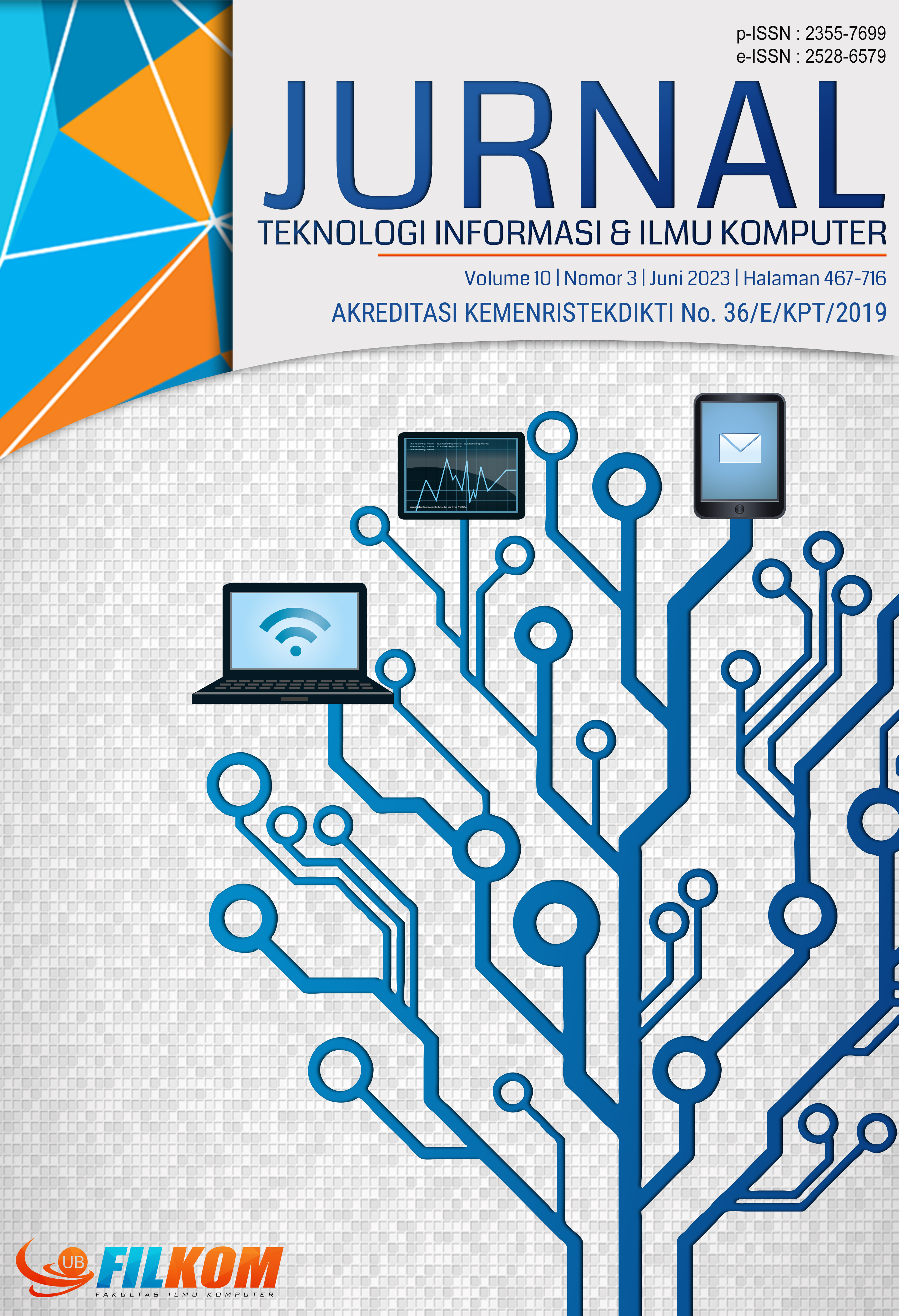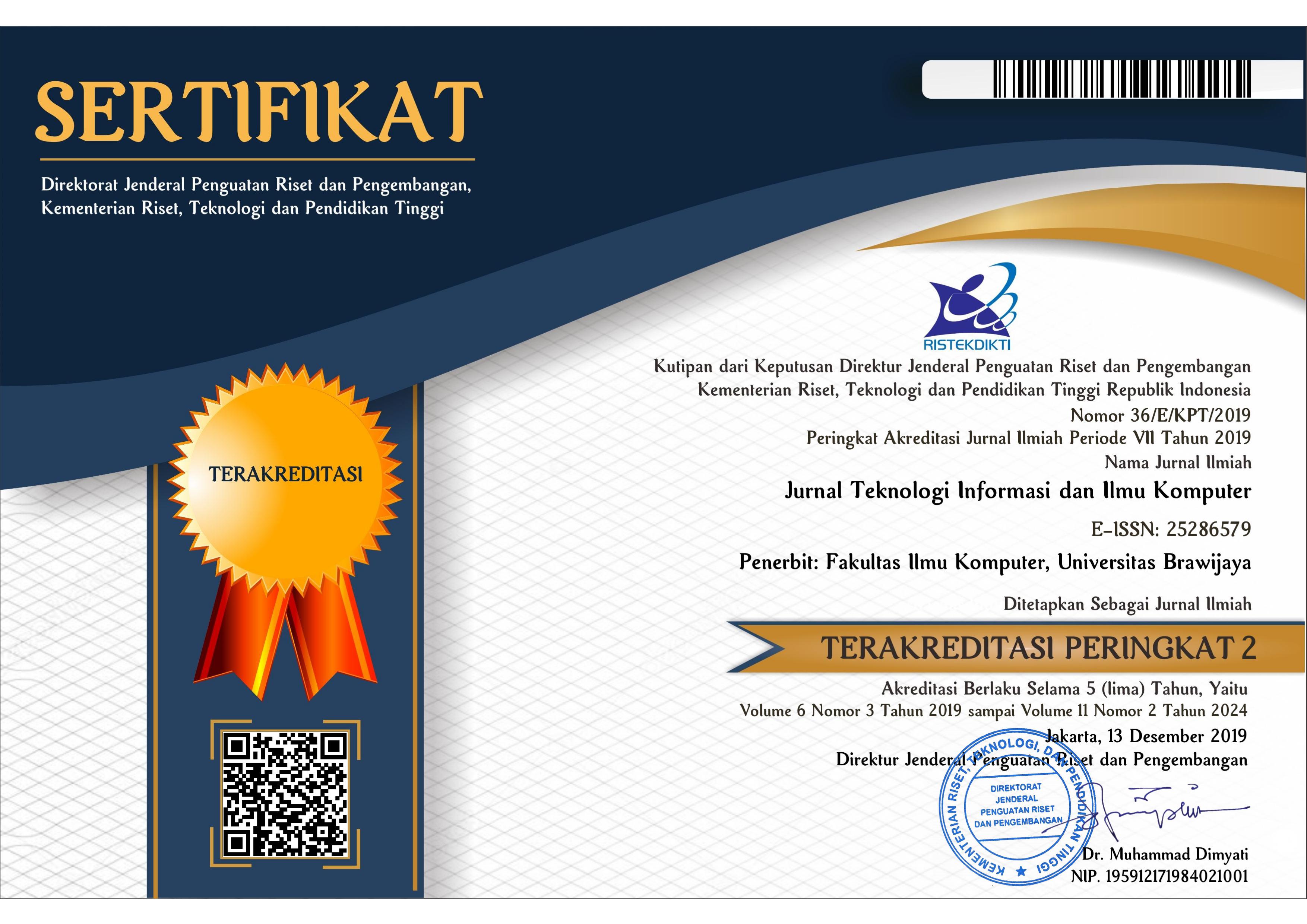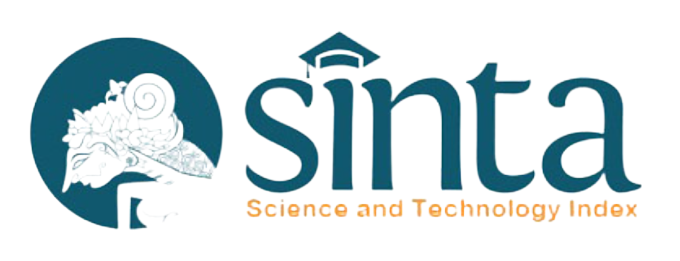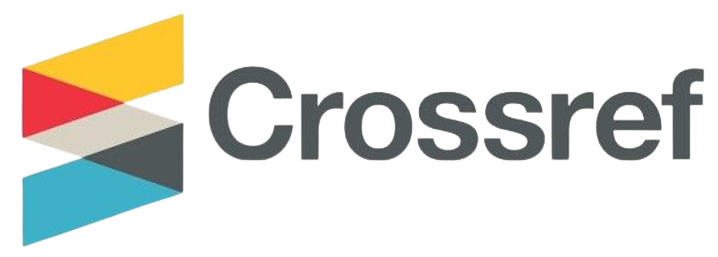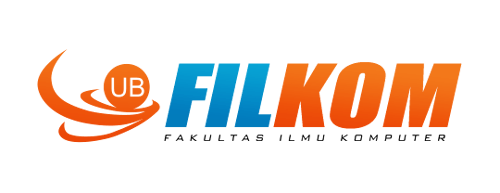Desain Head-Up Display Berbasis Refleksi untuk Aplikasi Navigasi pada Mobil Menggunakan Metode Human-Centered Design
DOI:
https://doi.org/10.25126/jtiik.2023106677Abstrak
Aktivitas mengemudi mobil disertai penggunaan navigasi adalah hal yang umum ditemui pada masyarakat. Perangkat navigasi umumnya menampilkan petunjuk rute pada layar perangkat ponsel pintar atau pada head unit. Namun, penggunaan perangkat navigasi dengan cara tersebut dapat membuat pengendara mobil terdistraksi pada saat mengemudi. Penelitian ini memberikan alternatif solusi untuk meminimalisir distraksi pada pengemudi mobil menggunakan desain navigasi Head-up Display (HUD) yang direfleksikan pada kaca depan mobil dengan pendekatan Human-Centered Design (HCD). Informasi navigasi direfleksikan pada kaca depan mobil menggunakan ponsel pintar sebagai proyektor informasi navigasi. Penelitian ini juga berkontribusi pada perancangan kerangka desain navigasi yang terlihat jelas serta nyaman bagi pengemudi mobil. Hasil penelitian menunjukkan bahwa konsep HUD dalam penyampaian informasi navigasi tidak membuat koresponden merasa terdistraksi. Analisis hasil kuisioner menunjukkan bahwa warna sian adalah warna yang paling memiliki dampak positif bagi informasi navigasi yang terlihat jelas dan nyaman. Aspek ukuran dari kerangka desain navigasi yang optimal ditunjukkan dengan informasi navigasi berada di dalam lingkaran berdiameter 5,077 cm. Kontribusi dari penelitian ini diharapkan dapat dijadikan referensi untuk diterapkan pada aplikasi navigasi yang menggunakan metode Head-up Display.
Abstract
Driving a car activity while using navigation is commonly found in people. The navigation device usually displays route guide either on the smartphone’s screen or the head unit. However, the usage of this kind of navigation while driving a car can make a distraction for the driver. This research proposed an alternative solution to minimize distraction and to keep car driver stay on focused while they look at reflected navigation HUD information on the windshield. This research uses Human-Centered Design (HCD) as the method. This research proposes a simple HUD concept to reduce distraction. This HUD Concept uses the car’s windshield as a reflector for navigation arrows. This concept uses a smartphone to project navigation information. This research proposes a framework design of navigation that is clear to see and comfortable from a car driver’s viewpoint. The result of the research shows that the proposed HUD concept to display navigation information on a car’s windshield makes correspondents didn’t feel distracted. Another research result about optimal navigation design framework in color aspect is cyan. The size aspect of the optimal navigation design framework is inside a 5.077 cm diameter circle. The results of this research can be used as a reference for navigation applications that use the HUD method to display navigation information.
Downloads
Referensi
BARLOW, M. AND LÉVY-BENCHETON, C., 2018. Human-Centered Design. In: Smart Cities, Smart Future. [online] Hoboken, NJ, USA: John Wiley & Sons, Inc. pp.97–113. Tersedia di:< https://onlinelibrary.wiley.com/doi/10.1002/9781119516224.ch5> [Diakses 25 Oktober 2022].
CHOUKSEY, S. AND SIRSIKAR, S., 2016. A prototype of low cost heads up display for automobiles navigation system. In: 2016 International Conference on Computing, Analytics and Security Trends (CAST). [online] 2016 International Conference on Computing, Analytics and Security Trends (CAST). Pune, India: IEEE. pp.205–210. Tersedia di:< http://ieeexplore.ieee.org/document/7914967/> [Diakses 24 Februari 2019].
FAN, Y., LI, J., GUO, Y., XIE, L. AND ZHANG, G., 2021. Digital image colorimetry on smartphone for chemical analysis: A review. Measurement, 171, p.108829.
FLOOD, M., ENNIS, M., LUDLOW, A., SWEENEY, F.F., HOLTON, A., MORGAN, S., CLARKE, C., CARROLL, P., MELLON, L., BOLAND, F., MOHAMED, S., DE BRÚN, A., HANRATTY, M. AND MORIARTY, F., 2021. Research methods from human-centered design: Potential applications in pharmacy and health services research. Research in Social and Administrative Pharmacy, 17(12), pp.2036–2043.
HEMBREE, R., 2006. The complete graphic designer: a guide to understanding graphics and visual communication. Gloucester, Mass: Rockport Publishers.
KARELINA, M.YU., POSPELOV, P.I., TATASHEV, A.G., TERENTYEV, A.V., TROFIMENKO, Y.V. AND YASHINA, M.V., 2021. Risk factors analysis of distraction actions from driving. T-Comm, 15(12), pp.62–71.
KULAS, J., PRIETO PALACIOS ROJI, R.G. AND SMITH, A., 2021. IBM SPSS Essentials: Managing and Analyzing Social Sciences Data. 1st ed. [online] Wiley. Tersedia di:< https://onlinelibrary.wiley.com/doi/book/10.1002/9781119417453> [Diakses 25 Oktober 2022].
MAREŠKA, A., KORDOVÁ, T. AND HAVLÍK MÍKA, M., 2022. Production of Head-Up Display windshield and its relation with the image quality. Transactions on Transport Sciences, 13(2), pp.63–70.
MCHUGH, M.L., 2003. Descriptive Statistics, Part II: Most Commonly Used Descriptive Statistics. Journal for Specialists in Pediatric Nursing, 8(3), pp.111–116.
NORMAN, D.A., 2013. The Design of Everyday Things: Revised and Expanded Edition. New York: Basic Books.
PALINKO, O., KUN, A.L., COOK, Z., DOWNEY, A., LECOMTE, A., SWANSON, M. AND TOMASZEWSKI, T., 2013. Towards augmented reality navigation using affordable technology. In: Proceedings of the 5th International Conference on Automotive User Interfaces and Interactive Vehicular Applications - AutomotiveUI ’13. [online] the 5th International Conference. Eindhoven, Netherlands: ACM Press. pp.238–241. Tersedia di:< http://dl.acm.org/citation.cfm?doid=2516540.2516569> [Diakses 24 Februari2019].
PENDER, K., 1998. Digital colour in graphic design. Oxford ; Boston: Focal Press.
PFANNMÜLLER, L., KRAMER, M., SENNER, B. AND BENGLER, K., 2015. A Comparison of Display Concepts for a Navigation System in an Automotive Contact Analog Head-up Display. Procedia Manufacturing, 3, pp.2722–2729.
ROSS, S.M., 2014. Introduction to probability and statistics for engineers and scientists. Fifth edition ed. Amsterdam ; Boston: Elsevier, AP.
SNIDER, J., SPENCE, R.J., ENGLER, A.-M., MORAN, R., HACKER, S., CHUKOSKIE, L., TOWNSEND, J. AND HILL, L., 2021. Distraction “Hangover”: Characterization of the Delayed Return to Baseline Driving Risk After Distracting Behaviors. Human Factors: The Journal of the Human Factors and Ergonomics Society, p.001872082110122.
SORUM, N.G. AND PAL, D., 2022. Effect of Distracting Factors on Driving Performance: A Review. Civil Engineering Journal, 8(2), pp.382–405.
SUZUKI, S., YASUNAGA, H., MATSUI, H., FUSHIMI, K. AND YAMASOBA, T., 2018. Trend in otolaryngological surgeries in an era of super-aging: Descriptive statistics using a Japanese inpatient database. Auris Nasus Larynx, 45(6), pp.1239–1244.
TABASSUM, M.N., SHEIKH, M.U., BILAL, M., NOOR, S., WAHAB, A. AND TABASSUM, S., 2020. Frequency of use of mobile phones during driving among citizens of Lahore. Pakistan Journal of Medical and Health Sciences, 14, pp.533–536.
TALJAARD, L., MAHARAJ, R. AND HENDRIKSE, C., 2022. A descriptive analysis of the casemix presenting to a tertiary hospital emergency centre in East London, South Africa. African Journal of Emergency Medicine, 12(3), pp.252–258.
WURYANDARI, A.I., GONDOKARYONO, Y.S. AND MADE YOGA WIDNYANA, I., 2013. Design and Implementation of Driver Main Computer and Head up Display on Smart Car. Procedia Technology, 11, pp.1041–1047.
YING, M., 2020. The Design of Car Head-up Display System. IOP Conference Series: Materials Science and Engineering, 729(1), p.012025.
Unduhan
Diterbitkan
Terbitan
Bagian
Lisensi

Artikel ini berlisensi Creative Common Attribution-ShareAlike 4.0 International (CC BY-SA 4.0)
Penulis yang menerbitkan di jurnal ini menyetujui ketentuan berikut:
- Penulis menyimpan hak cipta dan memberikan jurnal hak penerbitan pertama naskah secara simultan dengan lisensi di bawah Creative Common Attribution-ShareAlike 4.0 International (CC BY-SA 4.0) yang mengizinkan orang lain untuk berbagi pekerjaan dengan sebuah pernyataan kepenulisan pekerjaan dan penerbitan awal di jurnal ini.
- Penulis bisa memasukkan ke dalam penyusunan kontraktual tambahan terpisah untuk distribusi non ekslusif versi kaya terbitan jurnal (contoh: mempostingnya ke repositori institusional atau menerbitkannya dalam sebuah buku), dengan pengakuan penerbitan awalnya di jurnal ini.
- Penulis diizinkan dan didorong untuk mem-posting karya mereka online (contoh: di repositori institusional atau di website mereka) sebelum dan selama proses penyerahan, karena dapat mengarahkan ke pertukaran produktif, seperti halnya sitiran yang lebih awal dan lebih hebat dari karya yang diterbitkan. (Lihat Efek Akses Terbuka).

